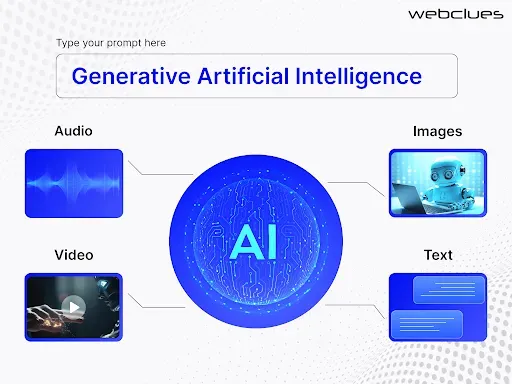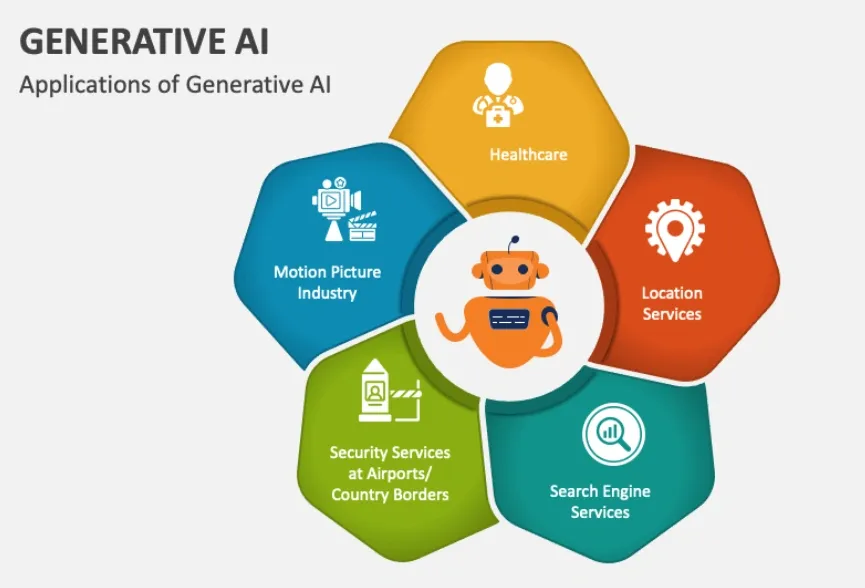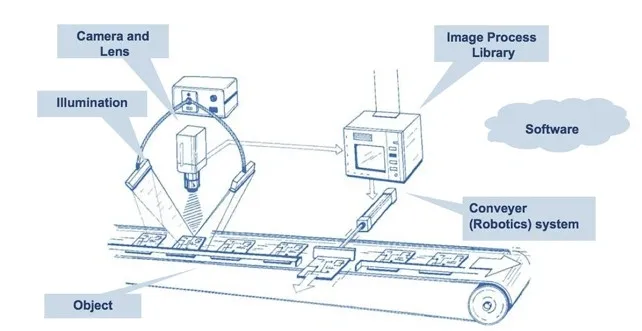Introduction
Generative AI is crashing the automation party like a rockstar on stage. This mind-bending tech doesn't just follow commands–it dreams up new ideas and solutions. Imagine robots doing tasks and coming up with their own moves, thanks to algorithms and training data. It's not just innovation; it's revolutionizing robotics as we know it!
Did you know?
According to recent data by MarketsandMarkets, the global robotics market is projected to reach a staggering value of $156.9 billion by 2025, underscoring the growing significance of robotics in various industries.
Generative AI is changing the game in robotics, making robots smarter and more versatile. One cool thing it does is help design robots quickly. By giving it some details, Generative AI can create many robot designs quickly, speeding up innovation.
Generative AI is also great for practice. It makes realistic virtual scenarios where robots can train without any real-world risks. This makes robots better at handling tricky situations when they're out and about.
Plus, Generative AI helps robots act more like us. They can show human-like behaviors and expressions, making working together easier, especially in hospitals and customer service.
Let’s explore how Generative AI is shaking things up in the world of robots, making them more useful and fun to be around.
Generative AI and Robotics
Generative AI and robotics are a formidable duo, combining the power of artificial intelligence with physical machines.
Generative AI, fueled by advanced algorithms, enables robots to learn and adapt, making them more autonomous and responsive.
This synergy allows robots to perform complex tasks, from manufacturing and healthcare to exploration and customer service, with greater precision and efficiency.

The result?
A transformative impact across industries, streamlining processes, reducing human intervention.
And paving the way for a future where intelligent machines work alongside humans, enhancing productivity and pushing the boundaries of what's possible.
Enhancing Autonomous Decision-Making
Modern robots are increasingly capable of independent decision-making without human intervention. This autonomy is exemplified in self-driving cars and drones, where intricate algorithms process sensor data and promptly execute decisions.
This is where generative AI enables robots to learn and adapt to new situations independently, without relying on pre-programmed rules.
Applications of Generative AI in Autonomous Systems
Numerous autonomous systems use generative AI to enhance their decision-making abilities.
For instance, self-driving cars employ generative models to forecast the actions of other vehicles and people, allowing them to plan their routes safely and effectively.
Drones use similar models to navigate complex environments and avoid obstacles.

Generative AI Improves Accuracy and Efficiency in Decision-Making for Robots
One of the main benefits of generative AI for autonomous decision-making is that enabling robots to learn from data and adapt to new conditions can increase the accuracy and efficiency of those machines.
By building virtual surroundings and instructing robots in simulated scenarios, generative models can assist robots in making better decisions in the actual world.
This can lead to more efficient and effective autonomous systems across various applications.
Object Recognition in Robotics
Object recognition is vital because it enables robots to understand their environment, interact with objects, and perform tasks efficiently.
It's like giving them eyes and a brain to process visual information. With object recognition, robots could navigate, manipulate, or even recognize common items in their surroundings.

Limitations of Traditional Object Recognition Methods
Traditional object recognition methods have their limitations.
They rely on predefined rules and patterns, which means they can struggle with complex or abstract objects.
Generative AI Techniques Improve Object Recognition in Robots
Enter generative AI techniques like GANs (Generative Adversarial Networks) and VAEs (Variational Autoencoders).
These fancy-sounding algorithms are game-changers when it comes to object recognition in robotics.
They learn from vast amounts of data and can generate realistic examples of objects, even those they haven't encountered before.
It's like giving robots a crash course in art appreciation and expanding their capabilities beyond traditional methods.
Training robots with generative AI techniques makes them smarter at recognizing objects in complex and diverse scenarios.
They learn to generalize patterns, adapt to changes, and even handle occlusions or partial views of objects. It's like giving them superpowers in the realm of object recognition!
Improving Robot Creativity and Design
Now that our robots can recognize objects like pros, let's chat about generative design in robotics.
Do you know how humans can design creative and innovative things?
Well, robots can do it, too, because of generative design!
Introduction to the Concept of Generative Design in Robotics
Generative design is about automatically leveraging AI to generate robot design options.
Instead of humans manually designing every nut, bolt, and gear, generative design algorithms explore a vast range of possibilities and come up with optimized designs that humans might never think of.
It's like having a design assistant with endless ideas and skills!
Applications of Generative Design in Creating More Innovative and Efficient Robots
Generative design is finding its way into various robotic applications.
For example, in manufacturing, robots designed through generative AI can be lighter, stronger, and more energy-efficient. In healthcare, robotic prosthetics can be customized to fit individuals perfectly.
The possibilities are endless! It's like giving robots a design studio and letting their creativity fly.
AI-Powered Generative Design Improves Robot Efficiency, Productivity, and Creativity
Robots become more efficient, productive, and creative with AI-powered generative design. Robots can optimize for performance, cost, or other criteria by automatically exploring various design options.
This leads to lightweight, resource-efficient robots that can perform tasks more effectively.
Plus, robots get a chance to stretch their design muscles and come up with innovative solutions that go beyond human thinking.
Potential Challenges and Limitations:
Challenges and limitations must be addressed with any new technology. Regarding generative AI in robotics, some potential roadblocks include:
Limited data availability: You need a lot of data to train AI models effectively. However, in some cases, enough data may be available to create accurate generative AI models for robotics.
Safety concerns: Robots powered by generative AI could pose safety risks if malfunction or make errors. Ensuring the safety of users and bystanders will be a crucial factor in developing and implementing this technology.
Ethics and regulation: Ethical and regulatory considerations must be addressed with any technology involving artificial intelligence. For example, who is responsible if a robot powered by generative AI causes harm? How can we ensure these robots are used ethically and in line with societal norms?
Opportunities for Development and Innovation
Despite these hurdles, numerous chances exist for advancing and innovating generative AI in robotics. Here are some areas where we could witness exciting developments:
Simulating real-world scenarios: Generative AI enables us to simulate real-life situations that robots might face. This provides a safe training ground for them to learn without the risk of causing damage to physical objects or people.
New robotics applications: The progress in generative AI could open doors to previously unimaginable robotics applications. For instance, robots can create customized objects on demand or adapt to unpredictable environments.
Enhanced efficiency and productivity: By using generative AI to optimize robotic systems, we could see significant gains in efficiency and productivity. This could lead to cost savings and improved outcomes across various industries.
Conclusion
Generative AI in the Robotics market is all set for serious growth. We're talking about big changes based on what we've seen in the past and what's happening right now.
This blog gives you the full picture of who's in the game and how much they're bringing to the table. It's like a scoreboard for companies, showing who wins in terms of money (in billions) and how many units they sell.
We've gone through this market with a fine-tooth comb, looking at the kinds of products, who's buying them, and where they're being sold.
It's like a market map, so you can see what's happening and where it's all headed.
The possibilities are endless, with robots becoming more creative, efficient, and adaptable.
You can be a tech enthusiast, a marketer, or a business owner,
We’re living in exciting times, and new developments will come ahead.
Frequently Asked Questions (FAQs)
What are some innovative applications of Generative AI in Robotics?
Generative AI is revolutionizing robotics by enabling tasks like object recognition, path planning, and even generating lifelike robot motions. It's also used in simulating and training robots in virtual environments for real-world applications.
How does Generative AI improve robot perception?
Generative AI enhances robot perception by generating synthetic data to train models, helping robots recognize objects, textures, and environments more accurately, even in challenging conditions.
Can Generative AI be used for robot motion planning?
Yes, Generative AI aids in motion planning by generating feasible and efficient trajectories for robots, enabling smoother and safer movements in complex environments.
What role does Generative AI play in autonomous navigation for robots?
Generative AI assists in creating detailed maps and generating navigation strategies, empowering robots to navigate autonomously in unfamiliar or dynamic environments.
How does Generative AI benefit robot-human interaction?
Generative AI generates natural and human-like dialogues and gestures, making robots more engaging and effective in human-robot interaction scenarios like customer service or companionship.
Can Generative AI be used to improve robot learning and adaptation?
Generative AI aids in robot learning by generating diverse training data and simulating various scenarios, accelerating the learning process and improving a robot's adaptability to new tasks

